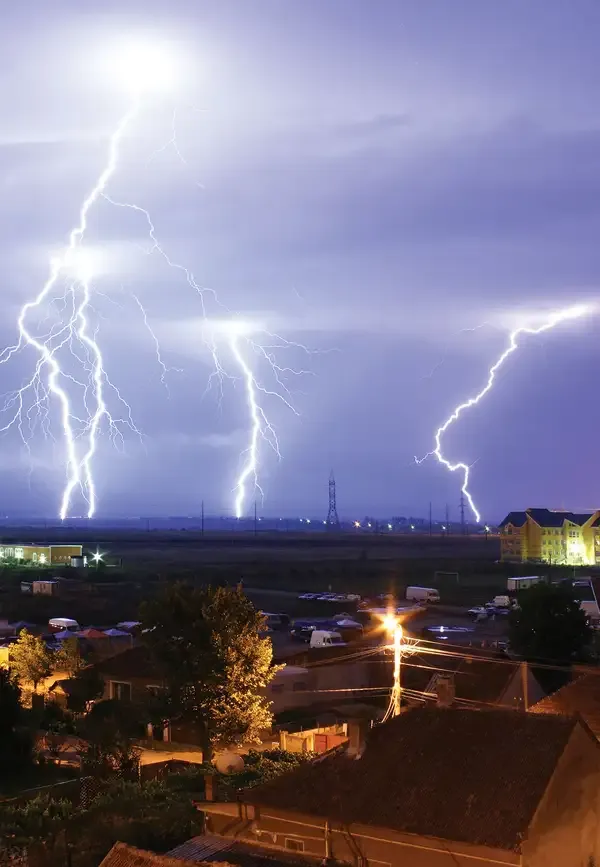- Home >
- Science
- > Technology
10 Places to Visit in the Solar System
Explore the wonders of our solar system with a journey through ten fascinating destinations. Marvel at the towering peaks of Olympus Mons on Mars and the swirling clouds of Jupiter's Great Red Spot. Dive into the icy oceans of Europa and bask in the sulfuric beauty of Io. Experience the enigmatic hexagon storm on Saturn and the dazzling rings of Uranus. Witness the blue hues of Neptune and the mysterious Kuiper Belt. Each location offers a unique glimpse into the universe's natural marvels.

The Solar System is a vast and mesmerizing expanse filled with stunning celestial wonders. From the fiery surface of Venus to the icy rings of Saturn, each planet and moon holds its unique charm. In this article, we'll explore 10 extraordinary places to visit in the Solar System, each offering a glimpse into the beauty and diversity of our cosmic neighborhood.
1. Mars – The Red Planet
Known for its reddish appearance, ''Mars'' is a prime candidate for exploration. The planet's ''Olympus Mons'', the tallest volcano in the solar system, stands at a staggering height of 13.6 miles. Additionally, ''Valles Marineris'', a canyon system that dwarfs the Grand Canyon, stretches over 2,500 miles long. Mars is not only a destination for future human exploration but also a site of great scientific interest.
2. Europa – A Moon of Jupiter
''Europa'' is one of Jupiter’s largest moons and is renowned for its smooth ice-covered surface. Beneath this icy shell lies a vast ocean, raising the exciting possibility of extraterrestrial life. The potential for ''subsurface oceans'' makes Europa a fascinating destination for astrobiologists and space enthusiasts alike.
3. Saturn – The Ringed Giant
No visit to the Solar System would be complete without experiencing ''Saturn'' and its stunning rings. These rings are composed of ice and rock particles, creating a breathtaking spectacle. The ''Cassini spacecraft'' has provided some of the most stunning images of Saturn, revealing the beauty of this gas giant in all its glory.
4. Titan – Saturn’s Largest Moon
Titan is another moon of Saturn and is unique because it has a dense atmosphere and liquid lakes of methane and ethane. This makes it one of the most Earth-like places in the Solar System, despite its frigid temperatures. The surface features of ''Titan'', including its vast sand dunes and river systems, are a captivating area for exploration.
5. Venus – The Morning Star
Often called the ''Morning Star'', ''Venus'' is known for its extreme temperatures and dense atmosphere composed mainly of carbon dioxide. Despite its harsh conditions, the planet’s stunning cloud formations and volcanic landscapes make it a beautiful, albeit inhospitable, destination. Studying Venus can also provide insights into climate change on Earth.
6. Enceladus – A Water World
''Enceladus'', another one of Saturn's moons, has gained attention due to its geysers that spew water vapor and ice particles into space. This suggests the presence of a subsurface ocean, making it a prime candidate in the search for extraterrestrial life. The plumes of Enceladus are a spectacular sight, showcasing the moon's dynamic geology.
7. Ganymede – The Largest Moon
''Ganymede'', the largest moon of Jupiter, is unique because it has its magnetic field. It features a diverse terrain with both old, heavily cratered regions and younger, grooved terrains. Ganymede's potential for a subsurface ocean places it as a fascinating target for future missions aimed at understanding the habitability of celestial bodies.
8. Mercury – The Swift Planet
As the closest planet to the Sun, ''Mercury'' experiences extreme temperature fluctuations. Its surface is covered with craters and has a unique geological history. Despite its harsh conditions, the planet offers stunning views of the Sun and the cosmos beyond, making it an intriguing place to study planetary formation.
9. Ceres – The Dwarf Planet
Located in the ''Asteroid Belt'', ''Ceres'' is classified as a dwarf planet and is known for its bright spots, which are believed to be deposits of salt left by briny water. Ceres is an exciting destination for scientists studying the building blocks of the Solar System and the potential for life beyond Earth.
10. Pluto – The Former Ninth Planet
Though reclassified as a dwarf planet, ''Pluto'' remains a fascinating destination. Its complex surface features, including mountains made of ice and vast plains, tell a story of geological activity. The New Horizons mission provided incredible images of Pluto, revealing its beauty and complexity, and reigniting interest in this distant world.
Conclusion
The Solar System is filled with incredible destinations, each offering unique opportunities for exploration and discovery. From the stunning rings of Saturn to the icy moons of Jupiter, these places ignite our curiosity and drive our quest for knowledge about the universe. As we continue to advance our technology and understanding, the potential for human exploration of these celestial wonders grows ever closer.
| Place | Description |
|---|---|
| Mars | The Red Planet known for Olympus Mons and Valles Marineris. |
| Europa | A moon with a subsurface ocean, potential for life. |
| Saturn | Famous for its beautiful rings made of ice and rock. |
| Titan | A moon with a dense atmosphere and methane lakes. |
| Venus | Known for its extreme temperatures and volcanic landscapes. |
| Enceladus | A moon with geysers and a subsurface ocean. |
| Ganymede | The largest moon with a magnetic field. |
| Mercury | The closest planet to the Sun with extreme temperatures. |
| Ceres | A dwarf planet with bright spots of salt. |
| Pluto | A complex dwarf planet with icy mountains and plains. |
Exploring these celestial bodies not only expands our understanding of the Solar System but also fuels the imagination of what lies beyond. As space exploration continues to evolve, these destinations will remain at the forefront of our journey into the cosmos.












